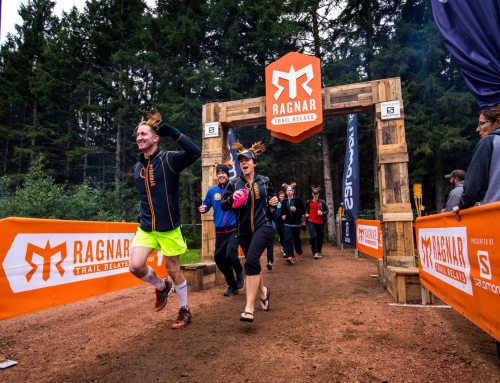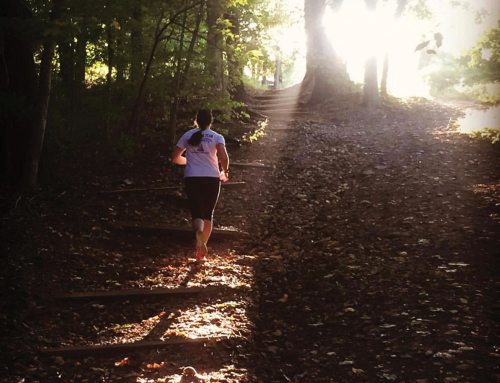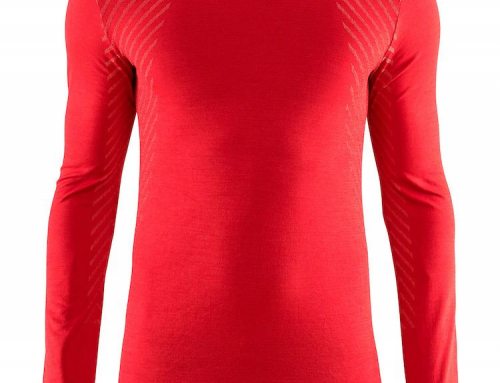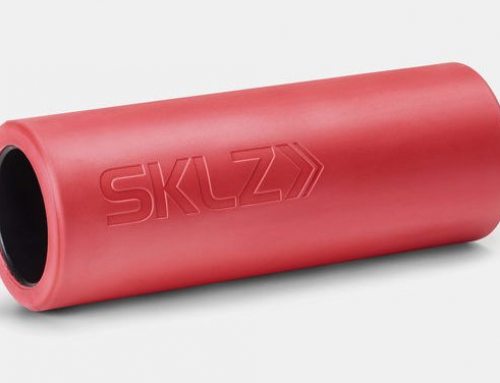
Tom Caughlan, Endurance Sports Media Group
This spring, running and trail shoe companies will offer a more diverse array of specialized trail running shoes than ever before. Trends and new technologies focus on reducing seams and weight, lowering heel drop and improving the heel-to-toe transition of the shoe, and increasing surface area contact throughout the sole of the shoe. Shoe companies have used their own sponsored athletes to push the envelope in shoe design. And the resulting trickle-down effect has benefited us all. Five years ago, no one would have predicted the veritable onslaught of specialized trail shoes weighing a mere 7 ounces and providing durability sufficient enough for the most rigorous training.
Trail running can greatly benefit every other type of running. Technical trails force you to shift your weight, hop over rocks, ascend the steeps, and bomb the downhills. Trail running recruits muscles rarely used in road running, and strengthens ligaments and tendons to prevent injuries. But many runners gravitate toward the trail because it’s just plain fun. It breaks the monotony of daily training, and refreshes the body and soul. As the sport of trail running grows at an exponential rate, so do the options for trail running shoes. We hope to help you sort through the multitude by choosing some favorite new releases and updates for the spring season.
New Balance (Editor’s Choice)
MT110
Weight Men’s 7.7 oz. | Women’s 6.2 oz.
Price $85
The MT110 represents more than three years of collaboration between a design team and New Balance athletes Anton Krupricka and Erik Skaggs – two elite ultra/mountain runners. The result is a fully idealized trail racing/training shoe for experienced trail runners who can handle minimal support and cushioning. A state-of-the-art ultralight upper offers durability and surprising protection from the elements. The fit is snug through the heel and midfoot, but offers room for toe splay in the forefoot. A seamless shoe interior allows it to be worn barefoot and decreases any friction during hot or wet trail runs. A thin rock stop plate offers great protection while keeping the MT110 featherweight. The outsole of the MT110 is softer than many trail shoes, but the grip is phenomenal in all conditions. And the 4mm heel drop increases proprioception on the trail. If trail racing is in your future, this shoe is a must buy. And at $85, it’s a relative bargain. Also recommended for efficient neutral trail runners looking to transition into a more minimalist shoe.
Brooks
Cascadia 7
Weight Men’s 11.0 oz. | Women’s 10.2 oz.
Price $110
This most recent update of the popular Cascadia harkens back to earlier versions. As in days of old, the Cascadia 7 has a better fit throughout the upper, and the kind of support and cushioning that’s made for the long haul. Lovers of the Cascadia series will be coming back for more. Improvements to the upper include anatomical lacing and more breathable material that will let you spend all day on the trails in comfort. Brooks utilizes their soft and resilient Bio MoGo and DNA cushioning, which provides a great deal of comfort and support. A rock plate in the midsole of the shoe gives plenty of protection for your next long trail adventure. Brooks also included a Pivot system to help runners adjust to the varied and cambered surfaces of trail running. This is a great shoe for runners with a full-volume foot who like a lot of protection.
Inov-8
Roclite 285
Weight 10.1 oz. (unisex)
Price $120
The Roclite may be your go-to trail shoe for technical or muddy trails. Designed and tested in the English Lake District, where the sport of fell running reigns supreme, the Roclite 285 is ready to handle any kind of off-road running. The aggressive rubber outsole is both durable and sticky. It does well on rocky terrain and sheds mud well on messy trails. This Roclite 285 runs true to size, and the forefoot is a bit wider than many Inov-8 models, which pleased our testers. With a 6mm heel drop, traditional trail shoe wearers may want to transition slowly into this shoe. But lovers of minimalist trail shoes will appreciate the flexibility of the Roclite, which promotes natural running and midfoot/forefoot striking.
La Sportiva
Vertical K
Weight 6.9 oz. (unisex)
Price $115
Named for European mountain races that climb uphill for a kilometer, the Vertical K is a shoe designed for ascending technical trails with ease. Its Morphodynamic outsole is designed to increase surface area, thus increasing traction over difficult terrain. At the same time, the Vertical K doesn’t sacrifice cushioning. Testers were surprised that such responsive cushioning (via La Sportivas Morphodynamic EVA) was present in such a lightweight package. The Morphodynamic EVA is highly compressed and offers some protection from sharp rocks (the shoe lacks a rock plate). Testers thought it offered ample protection on all but the most burly of trail surfaces. An innovative stretchy gaiter made getting the shoe on a bit of a chore, but it was appreciated when dirt and debris stayed out of the shoe. We recommend sizing up, as the Vertical K runs a half-size small. With a 4mm heel-to-toe drop, it’s a good minimalist and racing option.
Salomon
XR Mission
Weight Men’s10.5 oz. | Women’s 9.5 oz.
Price $110
Salomon designed the XR Mission as a door-to-trail shoe for runners who do a lot of their training on the trail. A generous amount of heel and forefoot cushioning is aided by a noticeable arch that increases midfoot support without the aid of a medial post. Salomon increased the width of the forefoot from their usual (fairly narrow) fit, and runners appreciated the flexibility of the forefoot. Salomon used their OS Tendon technology to improve heel-toe transition. Some testers complained that the transition felt hard and inflexible when on flatter, smoother surfaces. But this feature aided in climbing on the trail. Adequate protection is provided by the firm, moderately lugged outsole. The XR Mission is recommended as a great transition shoe for beginning trail runners.
Saucony
ProGrid Peregrine 2
Price $100
Weight Men’s 9.9 oz. | Women’s 8.7 oz.
Saucony changed little in this update to the popular Peregrine, and with good reason. The Peregrine 2 handles a variety of trail surfaces thanks to an aggressive outsole that seems to shed mud and clay with ease. A more durable upper with well-placed welded overlays improves on weak spots from the original Peregrine. And Saucony kept the anti-lace bite pads on the tongue, which our testers feel really decreased pressure on the top of the foot. The Peregrine 2 retains a 4mm heel drop, and it handles rock-hopping ascents and bombing down technical descents with ease due to a minimal, yet effective rock plate.
About the Author
Tom Caughlan is one of the shoe gurus at www.runningshoesguru.com, and enjoys training and testing gear in the Rocky Mountains of Colorado.






